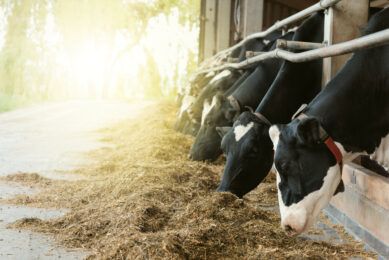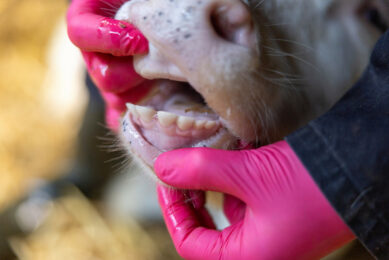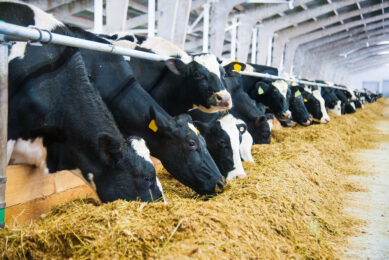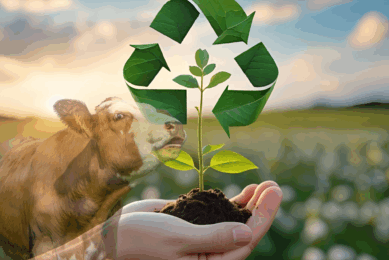Efficiency key in lowering GHG emission
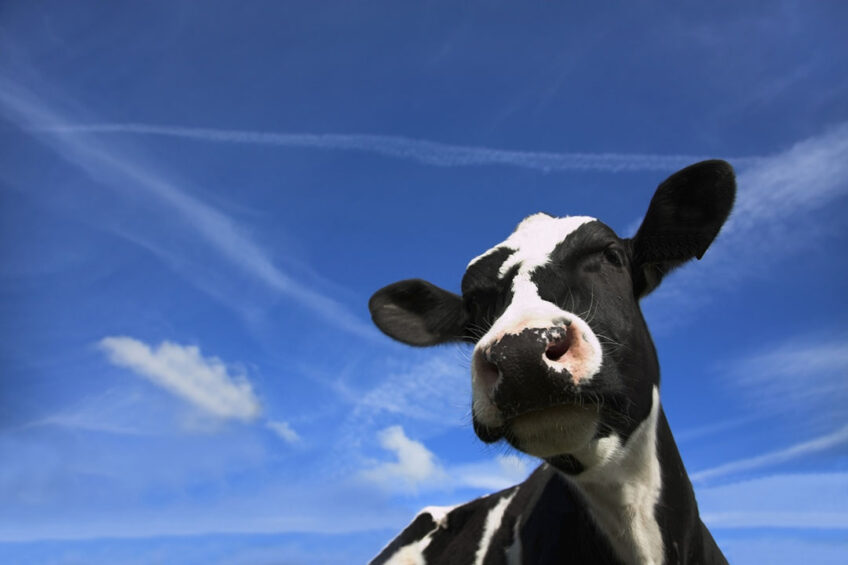
Dairy farms are a source of greenhouse gas emissions. Although the output per unit of product decreased, the sector can still reduce more by focusing on better efficiency.
This is according to a new report from the FAO and Global Dairy Platform. The report contains data from a study that calculated greenhouse gas (GHG) emissions from the dairy sector over a 10-year period (2005-2015). These results can help in finding solutions on where to target mitigation actions. The study was commissioned by the Dairy Sustainability Framework.

Largest reduction in low productivity countries
The analysis identified that (emissions per unit of product) by 11% from 2.8 to 2.5kg CO2 equivalents per kg of product produced. The largest reductions in emission intensity occurred in low and-middle-income countries with traditionally low productivity. While developed dairy regions also reduced the intensity of emissions, the FAO noted that the percentage improvement was not as substantial as these systems were already operating at much lower rates.
Absolute emissions increased, due to sector growth
Over the same period (2005-2015), global dairy production has grown by 30% to meet consumer demand for high-quality nutritious food products. The growth in milk production over the decade (2005-2015) has been achieved either through higher yield growth per milking cow, increased number of milking cows or combination of both, although there are differences per region (Figure 1).
The kg CH4 per animal is seen in Figure 2 and shows that cows in North America emit the most per animal. As a result of increased global output, absolute emissions rose by 18% globally. In 2015, emissions increased by 256 million tonnes CO2 eq. above 2005 levels. Importantly, the FAO notes that without the efficiency improvements made by the sector, total emissions from dairy would have increased by almost 38%, more than double the current levels being achieved.
More to do to mitigate emissions
The report also details where the dairy sector can positively address climate change. Improving the efficiency and profitability of the dairy farm is key in reducing the emissions.This can be done in a number of ways:
![]() Feed and feeding management:
Feed and feeding management:
- Increase feed efficiency by optimising the energy and protein content in feed
- Use of precision feeding techniques to match animal requirements with dietary nutrient supply
- Use more locally produced feed and source low-emissions feeds such as by-product
- Store more carbon in the soil by means of better grassland management
![]() Manure management
Manure management
- Improve manure collection, storage and utilisation.
- By using cow manure in biogas systems it is possible to: reduce emissions of GHGs associated with the storage of manure; improve the quality of fertiliser and replace fossil energy sources
- A switch from raw to composted manures can greatly reduce emissions.
![]() Fertiliser management (manure and commercial fertiliser)
Fertiliser management (manure and commercial fertiliser)
- Optimise consumption relative to need
- Lower manure application rates and the incorporation of manure into soils can reduce emissions while maintaining farm productivity
- Use commercial fertiliser produced in an environmentally friendly way with a low carbon footprint
- Spread fertiliser at the optimum time and with the best technology
![]() Energy use at the farm
Energy use at the farm
- Reduce fossil fuel energy use (e.g. electricity and diesel).
- Increase the use of sustainable energy, e.g. wind energy and biofuel to replace fossil energy sources.
![]() Animal health and husbandry
Animal health and husbandry
- Management of herd structures to reduce the number of non-productive animals through improved animal and herd fertility and reproduction is an effective approach to reduce emissions per unit of milk and increase dairy profitability.
- Reducing the prevalence of diseases and parasites would generally reduce emissions intensity as healthier animals are more productive, and thus produce lower emissions per unit of output.
- Improving the genetic potential of animals through planned cross-breeding or selection within breeds, and achieving this genetic potential through proper nutrition.
| Reducing emission through animal nutrition Dairy farms are a source of GHG emissions, mainly from enteric fermentation (methane) and manure management (methane and nitrous oxide) and feed production, transport and processing (carbon dioxide and nitrous oxide). Methane is produced as a byproduct of the digestive process in animals through a microbial fermentation process. Since enteric fermentation contributes more than half the total of emissions, this area represents a potential opportunity for mitigation. Emissions associated with feed production point to a potentially applicable strategy for reducing GHG emission intensity of milk, i.e. improving feed conversion efficiency defined as the amount of feed input for producing a given quantity of milk or using plant extracts or other feed additives such as probiotic yeast. Improving feed conversion is an attractive strategy that will not only contribute to reducing emission intensity but also improve farm profitability given that feed costs form a large share of overall farm costs. |
Join 13,000+ subscribers
Subscribe to our newsletter to stay updated about all the need-to-know content in the dairy sector, two times a week.



